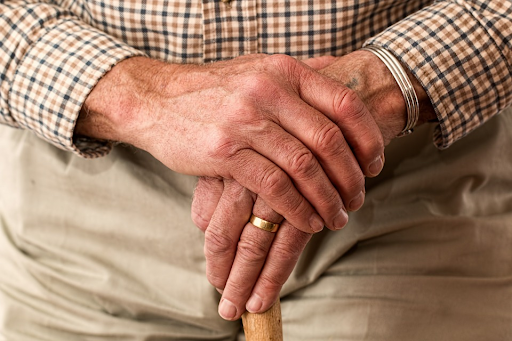Guest article by Mary Shannon . . . Find her at http://seniorsmeet.org/

Image via Pexels
As a senior caregiver, you made the admirable decision to dedicate a large portion of your time to helping a loved one maintain a normal quality of life. Perhaps you left a full-time job so you could focus on your caregiving responsibilities. In any case, being a caregiver likely leaves you with sporadic chunks of free time in between your duties. Taking on a side gig is a great way to occupy your time meaningfully and earn some extra income. Finding the right part-time hustle and getting started can be a stress-free process by keeping some handy guidance in mind — including these tips and resources presented by The Fundamentals of Healthcare.
The Best Side Gigs for Caregivers
The most important factor when deciding on what type of side gig to pursue is flexibility. Your duty as a caregiver comes first, so you should seek income strategies that give you full control of your own time. One way to ensure that you are your own boss is to start a small business. Alternatively, you can seek work on a freelance or contract basis. Some great side gig ideas for caregivers might include:
- Writing
- E-commerce
- Pet sitting or dog walking
- Rideshare or grocery delivery
- Housecleaning
How To Get Started and Find Work
Your path to finding work may vary greatly depending on what route you choose for your new side gig. Rideshare drivers, for example, can connect directly to clients through popular apps. If you decide to leverage your professional skills as a freelancer, there are online job boards where you can promote your services.
Starting your own business may require even more legwork. As a new entrepreneur, you will need to take advantage of any existing business connections you may have and work on a solid marketing strategy.
Essential Marketing Tactics
Unless your side gig grows into a full-fledged business with additional employees, you will be acting as your own marketing department to get the word out about your service. There are a number of DIY solutions you can utilize within your local area, such as putting up flyers or distributing business cards. Social media is also a great way to raise awareness locally or abroad if you are looking to provide a product remotely.
Experts assert that every business needs a website, no matter how small. Having a strong web presence can bring in many clients, especially if you include an eye-catching infographic that explains your business in an appealing way. A freelance graphic designer can help you create a professional-level image, or you can create your own. Get started with an infographic template that allows you to customize the background, text, and colors of the image you wish to create.
Legal Implications to Consider
There are some simple housekeeping tasks that you should be aware of when starting a business, even as a small-scale side hustle. When tax season rolls around, make sure to declare any income earned through your side gig so as to avoid committing tax evasion. To avoid other such issues with legal compliance, be sure to form your enterprise as the appropriate business structure for your situation.
Running a side gig could be just the thing to give you the sense of fulfillment you need. However, it is not always easy to balance your own business with the duties of caring for a senior loved one. Be sure to tap into your caregiver support network when you need a boost, and your road to success may be much less stressful.
😏










